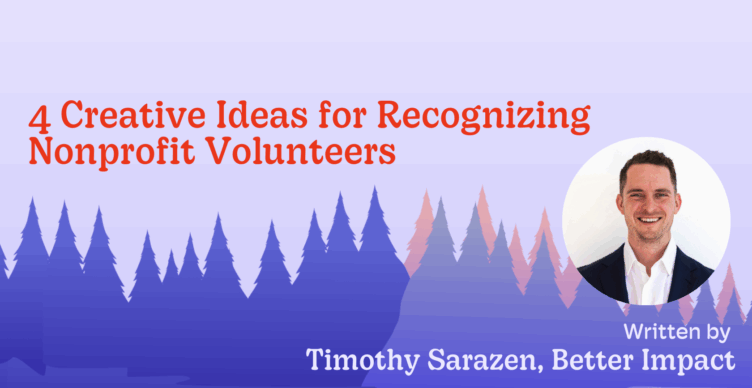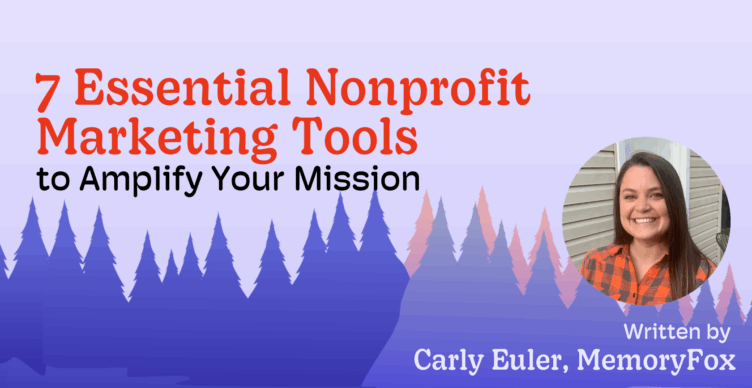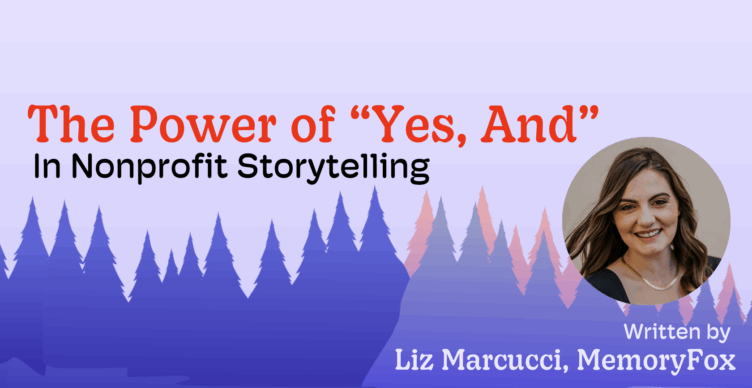Fundraising Tips, Video Storytelling
Enhancing Text Fundraising With Videos: 4 Storytelling Tips
Imagine you’re a donor who has just received texts from two nonprofits:
- Nonprofit A’s text contains only a few brief sentences and a donation page link: “Want to make the world a better place, [Name]? Help us reach our fundraising goal with a $25 donation! Donate here: [Link]”
- Nonprofit B’s text includes an impact statistic and a short video emphasizing the issue the organization is trying to address: “[Name], did you know that a $25 donation provides fresh produce to a family in need for an entire month? 🍅 Watch the Coen family’s story: [Video] and visit our website to help: [Link]”
Which nonprofit would you choose to support? Chances are, you would pick Nonprofit B—and you’re not alone. In fact, fundraising campaigns that incorporate video receive 114% more funding than those that don’t. By helping potential donors see how they can make a real difference in their communities, you’re much more likely to inspire them to give.
To start using video to enhance your text messages, you’ll first need text fundraising software that supports multimedia messaging service (MMS) texts. From there, it’s time to plan and produce engaging video content to support your mission. Let’s explore four storytelling tips to boost your results.
1. Gather powerful stories.
A well-told story helps potential donors empathize with your beneficiaries and understand the passion your staff and volunteers bring to your mission every day, deepening their investment in your cause.
Collect stories and amplify the voices in your nonprofit’s community by inviting them to participate in voluntary video interviews with your team. For example, you can ask:
- Beneficiaries to share how your nonprofit has changed their lives for the better
- Long-time donors to explain their reasons for supporting your organization
- Volunteers to recount their most rewarding experiences
- Staff members to describe their day-to-day efforts and successes
- Community leaders or partners to highlight the importance of your nonprofit’s work
Remember to obtain express consent before sending these videos to your text contact list. Provide a comfortable environment for participants to share their experiences and focus on empowerment rather than challenges. Honor their wishes if they prefer to be anonymous in their story.
2. Focus on brevity and clarity.
According to Tatango, you can use a wide variety of text messages to strengthen relationships with donors, from event reminders to volunteer requests and donation appeals. You can include videos in any of these kinds of texts—as long as your messages remain clear and succinct.
No matter what types of message content you use to connect with your audience through texts, keep these best practices in mind:
- Include only one call to action (CTA). You can promote many engagement opportunities to subscribers beyond donating, such as registering for an event, becoming a volunteer, or following your nonprofit on social media. However, you should only ever ask donors to do one thing in each text.
- Aim for videos that are only one to two minutes long. Focus on conveying your stories clearly and concisely to avoid losing your audience’s attention. If you want to feature a longer video somewhere else, such as on your website, simply include a clip of the most impactful moments and provide a link for subscribers who want to see the full video.
- Avoid using complex language or jargon. You don’t want to confuse viewers or make your giving process seem overly complicated. For example, rather than saying that donations will help “bridge the digital divide” in your community, explain that donations will provide essential technology training to help people succeed in their education and careers.
Consider adding easy-to-read subtitles to make your content more accessible and accommodate those who often watch videos without sound. Incorporate other simple visuals as needed. For example, one nonprofit, I Would Rather Be Reading, used Canva to enhance its fundraising video by adding statistics and graphics alongside the stories it collected from the community.
3. Use other platforms to boost visibility.
Once your story-driven video is ready, it’s time to make sure it’s seen. Sharing it across multiple channels helps you reach supporters where they already engage with your organization. Share your video through multiple channels beyond nonprofit text messages to expand your reach. The more platforms you use, the more likely your video will resonate with a broad audience with varying communication preferences.
Consider posting your video on:
- Your nonprofit’s website: Feature it on your homepage, campaign landing page, or a dedicated storytelling section to increase visibility and enhance your site’s emotional appeal.
- Social media: Share across platforms like Facebook, Instagram, LinkedIn, and TikTok to boost reach and encourage conversation. Use a unique campaign hashtag to drive visibility and make it easy for others to join in and share. Native uploads and captioned clips can help maximize engagement.
- Email: Include the video in your next newsletter or appeal to deepen emotional connections and drive action. A strong subject line can make all the difference—try something like “You need to see this 60-second story” or “This moment moved us—we think it’ll move you too.”
Promoting your videos across channels can even help you expand your text contact list with new subscribers. Simply add your nonprofit’s short code and keyword at the end of each video so people know how to opt into receiving text messages from your organization.
4. Follow up with a sincere “Thank You”.
When someone makes a mobile donation, they should automatically receive a follow-up that confirms and expresses appreciation for their support. eCardWidget recommends taking your thank you message to the next level by incorporating a sincere video. Doing so can leave a lasting impression and motivate donors to stay involved in the long run.
Creating a thank you video after a donation isn’t just a kind gesture—it’s a powerful opportunity to build long-term connection and trust. A sincere, thoughtful video helps donors feel seen, appreciated, and part of your mission. Keep these tips in mind when crafting yours:
- Address the viewer directly: Speak as though you’re talking one-on-one. Use “you” language to make the donor feel personally recognized and valued—this small detail creates a big emotional payoff.
- Specify impact with behind-the-scenes footage: Show exactly how their gift is making a difference. Whether it’s a glimpse of your work in action or an update from the field, real, unscripted moments go a long way in reinforcing their decision to give.
- Enlist staff or beneficiaries to deliver the message: A thank you feels more genuine when it comes from the people closest to the cause. Invite team members, volunteers, or beneficiaries to share short, heartfelt messages that highlight the human side of your impact.
A simple thank you video or impact testimonial can go a long way toward inspiring continued support. At the end of the video, invite the donor to stay engaged—without making another ask. You might highlight upcoming events, projects, and key milestones, for example. Suggest they follow you on social media, or share how they can continue tracking the difference they make with your nonprofit.
Video has the power to transform your text fundraising—making your messages more emotional, more memorable, and ultimately, more effective. But great storytelling doesn’t stop at sending. Depending on your text fundraising platform, track performance metrics like link clicks, reply rates, and unsubscribes to see what resonates. Then, use your nonprofit’s data to refine your strategy and continually improve.

About the Author
Mike Snusz, Director of Nonprofit Customer Experience, Tatango
Mike Snusz brings 19 years of digital fundraising experience to his role as Director of Nonprofit Customer Experience at Tatango, a text messaging platform for nonprofits and political campaigns. Prior to Tatango, Mike spent 15 years at Blackbaud leading a team of digital consultants that helped nonprofits improve their online fundraising, monthly giving, email marketing and peer-to-peer fundraising programs. Mike started his nonprofit career managing the Ride For Roswell from 2003 to 2005 in his hometown of Buffalo, NY.




